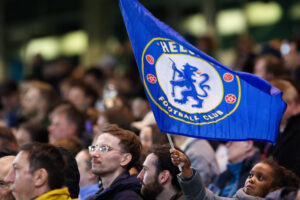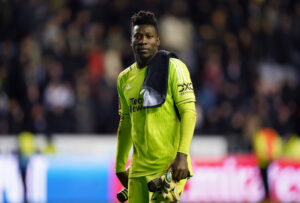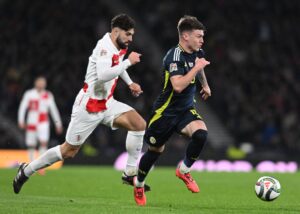When the line-ups came out for Manchester City against Arsenal, Pep Guardiola left us all guessing. He fielded a line-up lineup with three defenders, six midfielders and a lone striker, which is not anything close to usual for Guardiola or any manager. However, it was a masterclass of tactics that forced City to play at their best and tear the Gunners to bits.
Guardiola’s tactical plan against Arsenal was quite simple; he wanted to control. Not just control of the ball or control of the game, he always wants that, but he wanted control in transition, and his tactical wrinkle got him exactly that. When his teamsheet came out, many wondered what his aggressive attacking line-up would actually look like.
How Pep Guardiola’s Tactics Completely Controlled Arsenal
It was strange to see a Pep Guardiola team play with a double pivot in midfield. It’s something he had been very reluctant to do in the past. While at Barcelona, he almost always played Sergio Busquets as a single pivot, despite Xavi’s presence. Then at Bayern Munich, he played Xabi Alonso in the single pivot, with Phillip Lahm sometimes dropping in from full-back.
Now at Manchester City, he has continued to use his full-backs like he did at Bayern. There have been plenty of times where Kyle Walker or Fabian Delph were playing more as midfielders than full-backs. The crux of the system was that when one full-back went forward the other would drop into midfield.
That system, though, is reliant on the full-backs for Manchester City being excellent in possession. They can’t give it away cheaply when they are going forward. They also can’t give it away at all when they are staying back. Without Benjamin Mendy in the line-up, this has been a real issue for City. In the games against Crystal Palace, Leicester or Newcastle, City were caught out by poor giveaways when their full-backs were in possession.
So, with that in mind, Guardiola went looking for an unconventional method to eradicate that problem. He started three defenders against Arsenal; Kyle Walker, Nicolas Otamendi and Aymeric Laporte. In possession, they acted as a conventional back three, but out of possession, they were joined by Fernandinho in a back four. When they had the ball, Fernandinho would drive forward into the midfield to join Ilkay Gudogan in a double pivot midfield.
The Control
It was that decision that allowed Manchester City to take complete control of this game. For starters, it was a formation that allowed all of City’s best players to be on the field. It was the first time that David Silva, Gundogan, Fernandinho, Kevin De Bruyne and Bernardo Silva were all on the field at the same time and with all of them, plus Raheem Sterling and Sergio Aguero on the field, there was no need for the defenders to get forward.
It meant that when City lost the ball, one of the defenders was there to provide pressure. As they were applying pressure, the other two defenders retreat as far as seen fit, while sliding apart to create room for Fernandinho.
For example, in the first half, Sterling lost the ball on the left wing. He and David Silva provided initial pressure, but it was evaded. So Laporte and Gundogan provided the next wave of pressure, and this is where the wrinkle came into play. Laporte was coming from a different angle than most of the pressure usually does.
When the full-back is in the midfield like he has been, the angle is much harder to cut off a ball-player on the wing. With Laporte coming from a deeper, wider position it was easier for him and Gundogan to stop Arsenal from advancing. If they had gotten past that line of pressure, there were three more organized defenders there to get by.
Controlling The Ball
This gameplan would have been useless if Manchester City had been unable to make use of the control it afforded them. With all the attacking players mentioned above on the field, it’s hard to imagine they wouldn’t be able to use them. In particular, Ilkay Gundogan benefitted the most from this system.
The double-pivot is a position he excelled at when playing at Borussia Dortmund. Typically paired with a midfield destroyer, Gundogan would routinely open teams up with an excellent range of passing. The lob he played over the top to Sterling for the third City goal was absolutely perfect.
What This Means
Whether or not this is a system Manchester City will see more of his hard to tell. In theory, these upcoming games against Everton and Chelsea would be a great opportunity to use it again. However, it’s likely that Guardiola will rotate the team this week with the pile of upcoming fixtures. If he rotates it might be tough to see him going back to this complex system.
The game next Sunday against Chelsea is one where we might see this system again. Sarri’s side love to play with the ball, much like Arsenal, and they will try and keep hold of it. If City really want to try and suffocate them, this would be the best system for them to use. Plus, these tactics will allow plenty of men behind the press if it fails.
Main Photo






